
There is a string of things that cycle snobs sneer at. One thing I have learned from Audax rides is that, when distance and time rule there is no place for any rider to look down on another because the challenge is individual and competition is only with oneself. There are no prizes for the newest, lightest, prettiest or most expensive bike.
Britains cycling capital, Cambridge is pretty easy to get around on a bike. There are no challenging hills and it’s a small place. It’s no surprise that more people travel by bike in Cambridge than any other city in the UK. It’s not much more than 5 miles across in any direction. There are bike lanes painted on most roads and a handful of junctions have been made a bit safer for the cyclist mixing with the traffic. Things could definitely be better: riding the short distance to the next town in any direction leaves much to be desired. A visit to similar cities in Belgium, the Netherlands, Denmark or Germany reveals that it is possible to have roads designed for safe cycling without having to share space with motor traffic or break up routes with beg button crossings, block them with barriers or jam bikes onto footways shared with pedestrians.
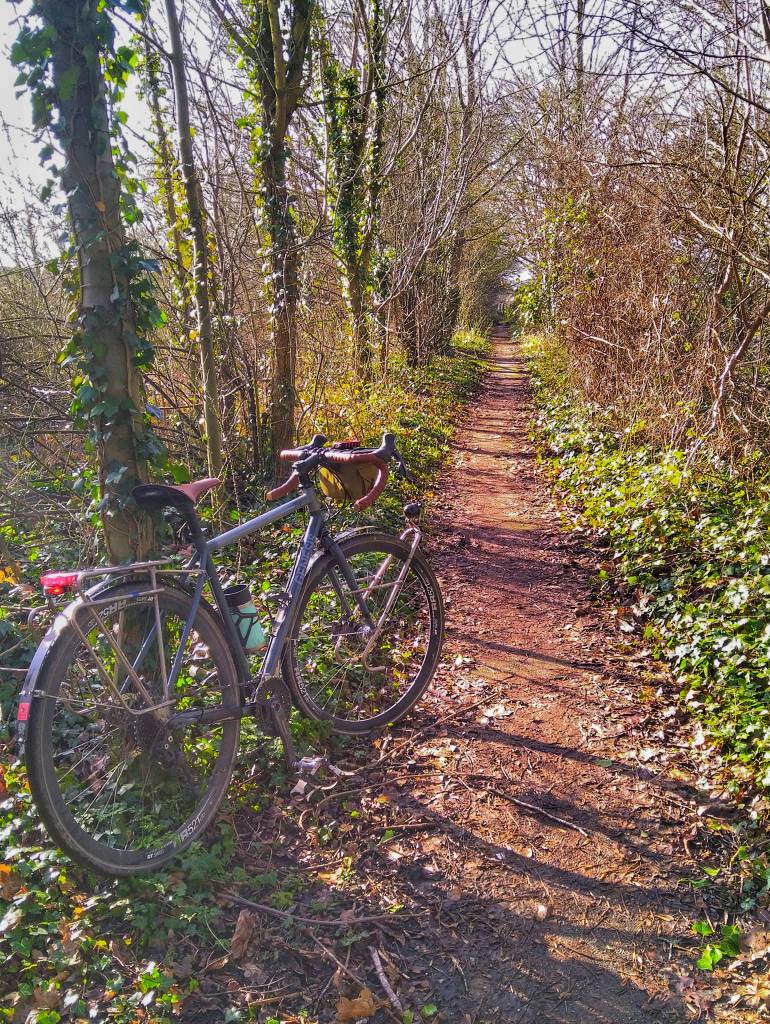
Getting from Cambridge to the next town on a bike without either riding on mud tracks or dodging traffic on A roads is almost impossible, The distances are not epic, especially if you consider using an e-bike:
| Google maps directions | |||
| Cambridge to: | By car (miles) | By bike (miles) | Google bike time |
| Newmarket | 12.2 | 15.8 | 1hr 19mins |
| Ely | 20.0 | 22.3 | 1hr 53mins |
| Soham | 18.6 | 16.5 | 1hr 24mins |
| Saffron Walden | 15.5 | 16.1 | 1hr 22mins |
| Royston | 14.5 | 16.2 | 1hr 27mins |
| Huntingdon | 20.7 | 22.1 | 1hr 52mins |
| St Neots | 25.0 | 23.3 | 1hr 59mins |
There are no safe bike routes from Cambridge to these towns. All involve riding on busy roads at some point and many involve dirt tracks which are at best muddy, at worst flooded for months in the winter. All are under 2 hours away at the modest pace of the Google rider.
Riding a bike for 2 hours is not to everyone’s taste, especially in the rain but if the oportunity was there to spend the time in the open travelling safely to a market town for coffee and cake, why not?
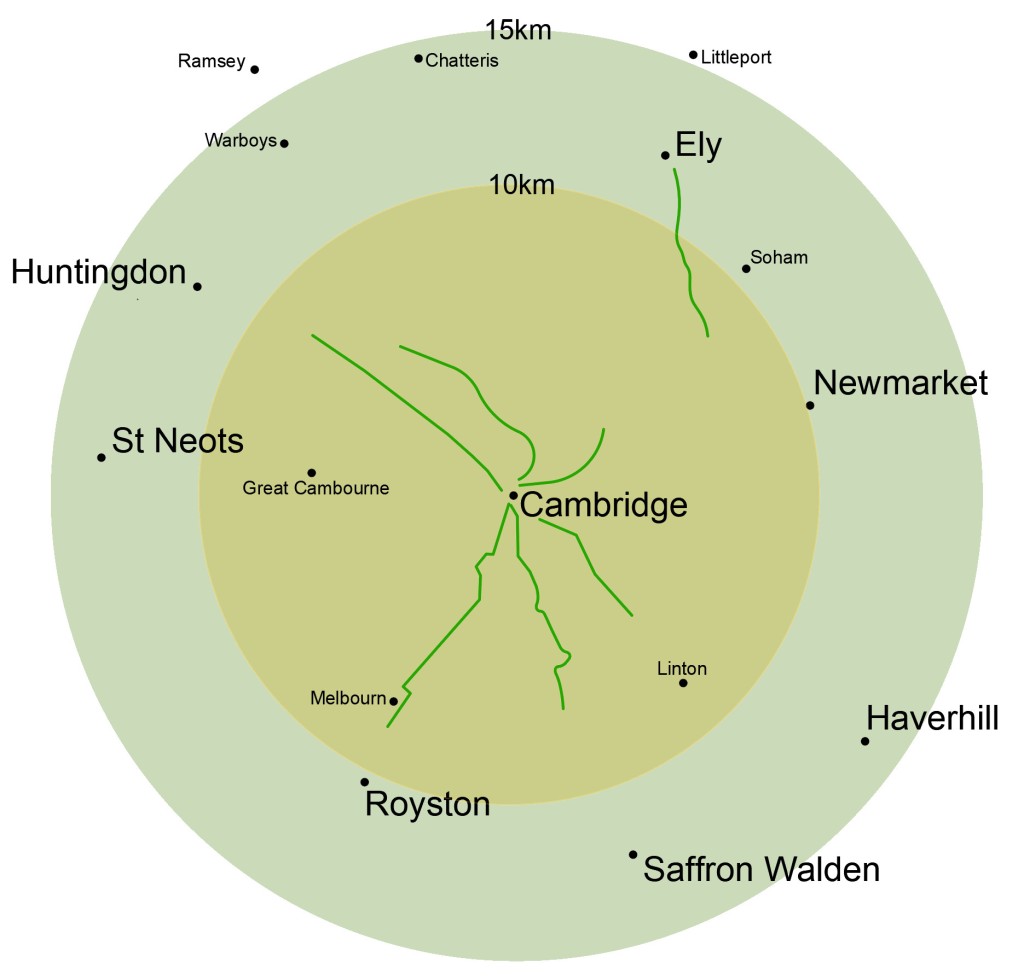
Peolpe are put off distance cycling by the terrible experience of using UK cycle infrastructure. The National Cycle Network (NCN) is fragmented and often very poor quality. The ‘network’ was developed on a shoestring with a strong ‘leisure’ focus and does not connect towns. Being unable to cycle any further than locally on safe routes is not surprising when, just 2 per cent of total transport budget is spent on infrastructure to support active travel. https://www.ippr.org/media-office/years-of-under-investment-in-englands-streets-has-left-people-walk-wary-and-cycle-cautious-says-new-report
Poor junction design and repeated interruptions to cycle lanes make them unusable over distances of more than a few hundred metres. Common practice is the conversion of footways to ‘shared use’ which involve frequent stops for side streets and car access. Most end up ignored by cyclists thus rendering the investment in active travel worthless.
Cycling snobbery is off-putting. Many think cycling this kind of distance is not for them because they feel they are not ‘serious’ cyclists. This is where cyclists do themselves no favours: we love our bikes and take pride in our achievements …and that can make cycling look like some knd of specialist, niche activity with connotations of athleticism and competition. The cycle industry is guilty of an over emphasis on sport and, despite recognising the value of the e-bike market, downplays the leisure or utility aspects, even to the point of labelling product ranges as ‘lifestyle’ or ‘casual’ as opposed to ‘performance’ or ‘competition grade’.
Jargon like ‘bikepacking’ ‘gravel riding’ and even ‘mountain’ biking make riding a bike seem like some kind of extreme sport rather than a means of getting around. Selling the idea thousands must be spent on specialist kit to be taken seriously on a bike is something many cyclists buy into with loud branding seeming more important than practicality.
Is carrying stuff on a bike a ‘style’ choice? The options come with an array of ‘disciplines’, each with its own, often conflicting, standards. A shopping bag over the hadlebars will only get you so far so the simple practicallity of a rack shouldn’t be a problem. Sadly this is where cycling factionalism seems to run deep. Why can’t you mix ‘mountain’ bike (MTB) kit with ‘road’ kit? Why don’t bikepackers use panniers? What is the difference between gravel and mountain biking? Why is a ‘rando’ bag different to a bar bag? What is ‘alt’ biking?

Road bike minimalism dictates the smallest saddlebag possible to hold a tube & tyre levers. Audax riders tend to go for a bigger saddlebag stuffed with a pork pies, a banana and a rain jacket.

‘Adventure’ means more stuff. A big rando (from the French Randonee) bag needs support and gets in the way of the cockpit, brake cables and the like.

A classic bikepacking set up tries to avoid racks and relies on straps around the frame tubes. Straps around tubes are a dirt trap and will rub the finish off, acellerating corrosion. Filling the front triangle is a crosswind liability and the instinctive tendency to ‘knee out’ to clear anything between them leads to terrible pain and possible long term injury. Filling the space between tubes moves the bottle cage to the road side of the down tube…the muddiest place on the bike, a gritty drink awaits. I’ve seen ‘seat packs’ wobble about horribly as if they are begging for a rack to be fixed to. Front fork loading is limited by ‘cargo cage’ capacity, something brought about by the poor fixings available on carbon forks. Mudgaurds seem to be a no-no for the bikepacker. The whole idea is to load the bike high up and carry very little.
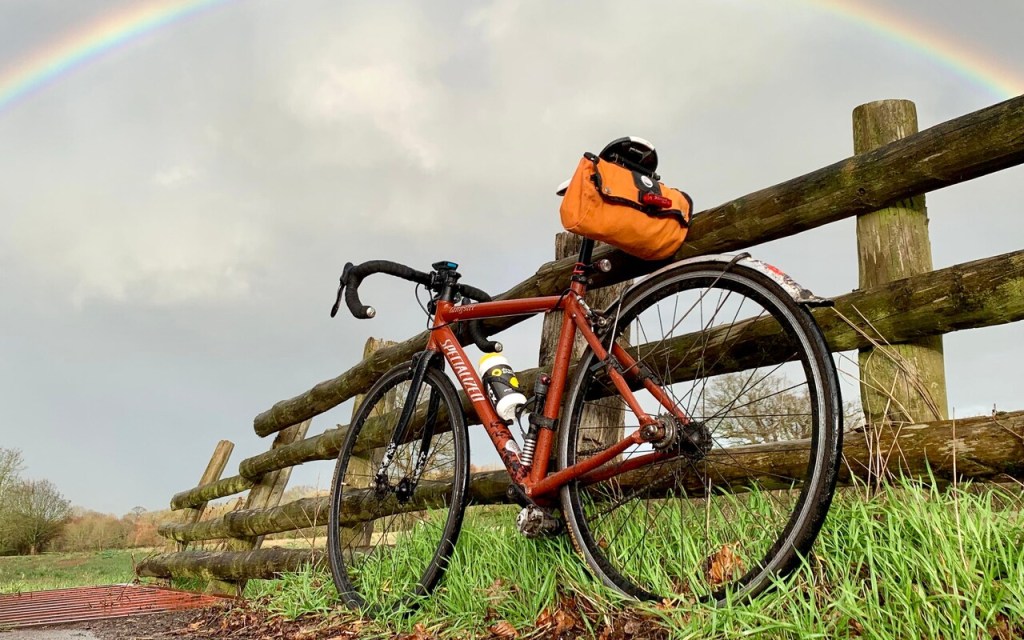
A single saddlebag is something of a standard audax accessory. Personally I find them fiddlesome to pack and unpack, they tend to be used to cover the emergency situations: rain, puncture and Mars bar stash.
The options are:
| Bike styles for carrying stuff | |||
| Option | style | fits | aspiration |
| jersey pockets | road | rider | speed |
| back pack | MTB | rider | big air |
| saddlebag | road/club | saddle with eyelets | speed |
| saddle bag with a support | Seat tube | endurance | |
| panniers (front & rear) | tourist | racks | utility/distance |
| bar bag | gravel | handlebar | speed/adventure |
| bar bag / rando bag | adventure | handlebar/fork rack | distance/adventure |
| ‘tail fin’ bag | bikepacking | Seat tube | speed/adventure ‘off road’ |
| frame bag | crossbar | ||
| top tube bag | crossbar/stem | ||
| fork tube bag(s) | Fork mounts | ||
| basket | casual | Handlebar/rack | utility |
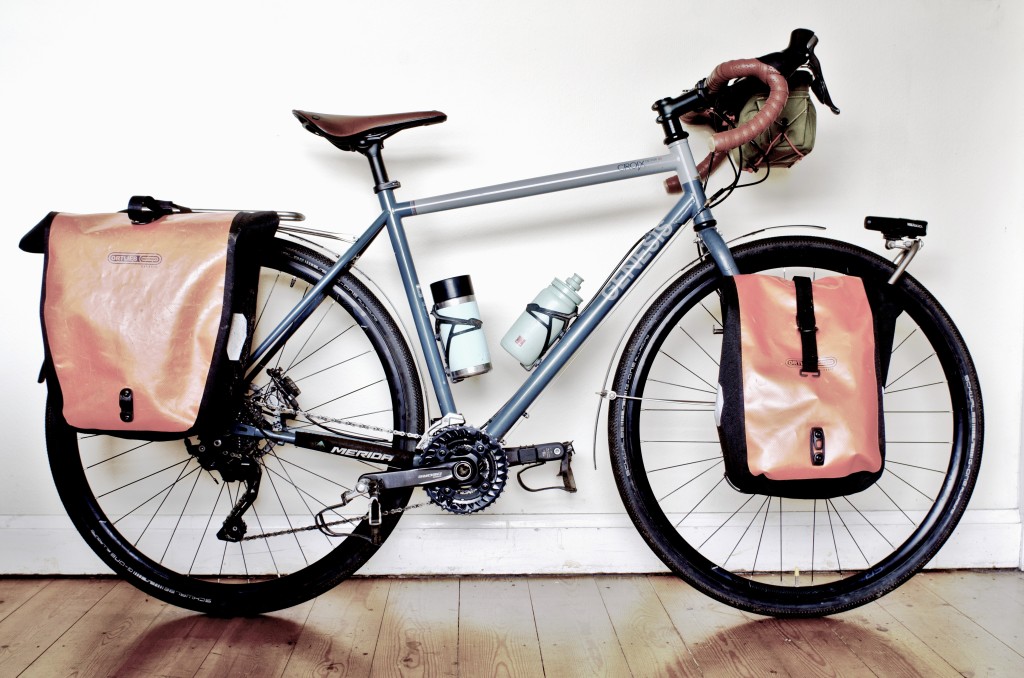
Bikepacker vs Tourist. Spending whole days on the bike means carrying clothing, food and what ever is needed at the destination (for me this could be cameras, tripod and a laptop, a weeks worth of laundry or a case of beer). The simplest option is a set of panniers. They are bulky and catch the wind but much better than carrying stuff on my back. If I only need to carry the essentials for a day, I can unclip them and just use a barbag. Panniers vary in size and quality and load limits are governed by mounting point and rack quality, once fitted and the rattles sorted shifting pretty much anything is possible. Fitting a bike out with panniers is looked down upon by advocates of ‘bikepacking’ who consider strapping stuff in tiny bags around the frame is more appropriate. The bikepacker is not in the business of travelling from one place to another but involved in ‘adventure’ as opposed to the touring cyclist who is seen to be a slow ‘trundler’ not daring to attempt the challenging trails only an elite can tackle.
A quote on an MTB forum shows how marketing can get in the way of a bike ride:
As an ‘adventure’ biker it’s important to spend a lot of your free time agonizing and fussing over every piece of gear for maximum performance. Suspension, undies, socks, tread wear, how to carry a wallet or keys or phone, perfect sunglass tint, reach of your brakes, how much electrolyte in your water – the list is endless, especially with new improved gear coming out constantly. it is important to consume and help with bike industry feed their starving kids and also afford to design new nonsensical standards we all need to read at length on line to understand. The bike industry needs us – don’t let them down with a purchase of a simple pannier & rack they introduced decades ago, please.
So what’s the beef with ‘bike-packing’? An occasional cycling acquaintance told me firmly anything other than bikepacking is ‘just riding along’. Apparently bikepacking is not touring…because it’s tougher, faster and more demanding than ‘trundling along with panniers’ and its not MTB because it needs a special bike for ‘off road’ but without flat bars or suspension. Bike-packing looks rather like yet another label for a leisure activity with all the expense and aspirational notions that entails.
Distance travel by bike is nothing new and, sadly, it’s became yet another way of othering those that consider themselves ‘serious’ or ‘extreme’ from the rest of us. The problem is, like the whole Lycra, charity ride thing, labels like ‘adventure’ or ‘bike-packing’ make cycling look either difficult or some kind of special sport event, rather than what it actually is: an under resourced, efficient, personal transport option for local journeys.
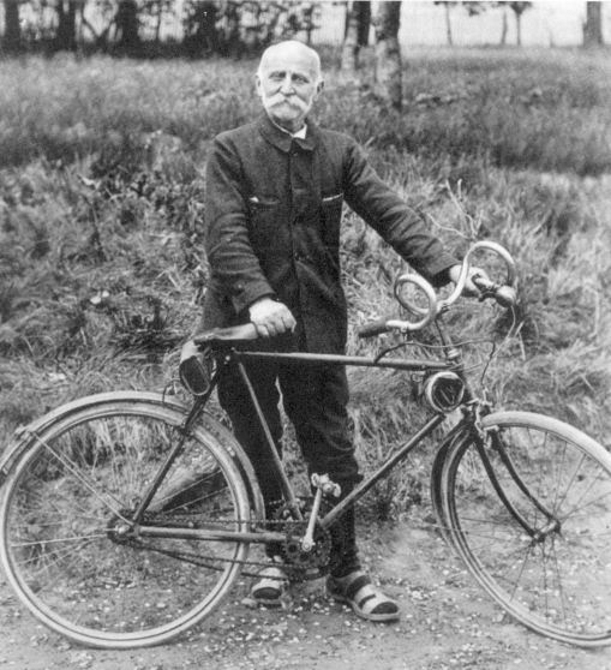
Understanding the origins of endurance travel by bike might help unravel the allure of the bikepacking adventure as a new twist in an old story. As an insult ‘tourist’ is pretty mild, touring by bike is a joy for many and it’s story lies at the origin of the modern bycycle. It was the need to get to the next town that lead to the invention of the deraileur by Paul deVivie a man who’s ambition to make cycling for everyman in turn lead to a life of adventure.
Cycle activism has centred on urban mobility, the visibility (and vulnerability) of the distance cyclist is perhaps an even bigger challenge to motornormativity.
When someone makes a voluntary choice to cycle despite the danger, this is a choice to put oneself in a position of vulnerability. While usually vulnerability equates to weakness, when that vulnerability is voluntary it becomes a challenge to a biased and inequitable mobility system that idolises strength and power.
James Crossely
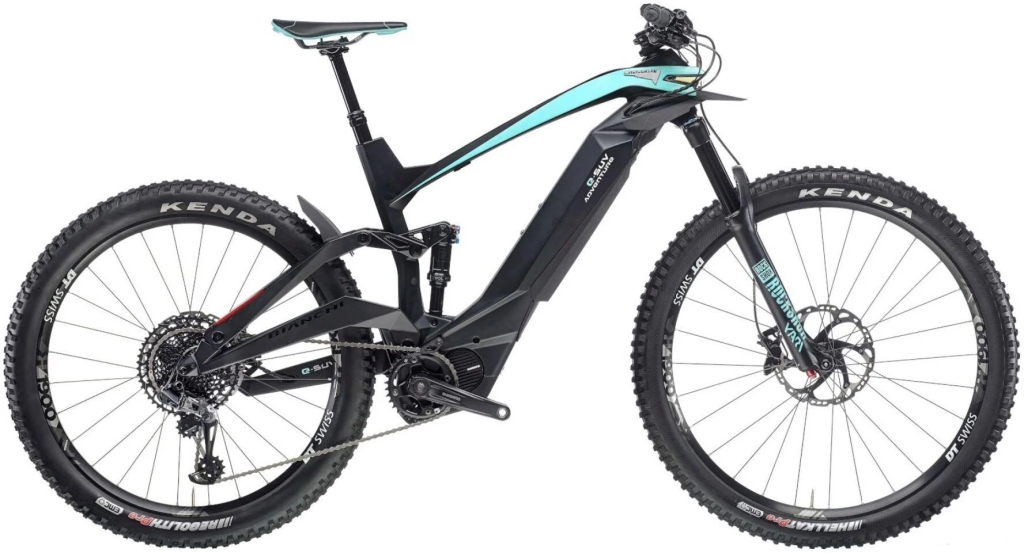
SUV bike anyone? Styles never stand still, the market simply won’t let them. The gravel fad will pass and, as the idea of suspension for rough ground sinks in, probably to evolve into a rebranded, high value MTB market segment. The concept of cycling as an aggressive, privileged sport re-enforces cycling as, not transport but as an elite leisure activity.
So however you go about it cycling is a great way to travel and, although there are obstacles it is by far the best way to get about, there will always be those who look down on you but the only thing that really matters is covering the distance: style matters not.
A day on the bike is seldom wasted. It’s an everyday joy.
B

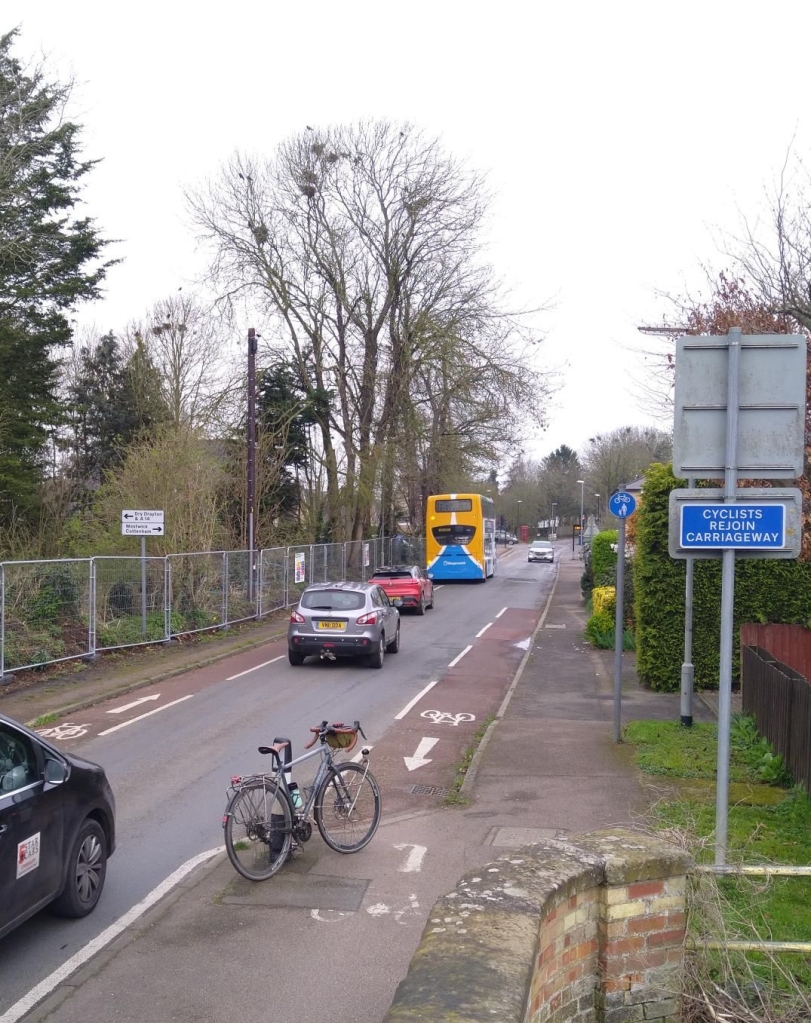
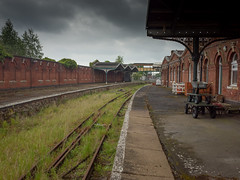
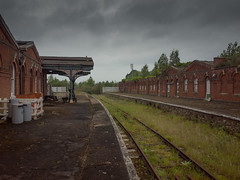


If you look up info on pannier racks on youtube you will find bike-packers discovering this remarkable new innovation ‘the rack’, which holds your rear roll-bag so much better than a wobbly seat-post :-).And yes gravel bikes are getting suspension and ever-fatter tyres so the distinction between gravel and MTB gets thinner by the minute. https://www.youtube.com/watch?v=ln8hwCqqH7QThe one change in all this gratuitous consumerism that I think will stick in the long term is gearboxes and belts. Those are just better.
Thanks for taking a look, after years of struggle with the Sturmey Archer I’ve been averse to gearboxes, I can see the modern ones are much better but, for me at any rate, the derailleur has the advantage of DIY maintenance and repair.
I think e-bike is the ‘game changer’ in that infrastructure demand from e-bikers might just be the lever we need to catch up with the mainland.